How Turner Gets 90% of Trades to Manage Their Own Deliveries Without Ever Double Booking its Hoists
Table of Contents:

Project Overview
General Contractor: Turner Construction
Architect: Ballinger
Developer: Wexford Science & Technology LLC
The Wexford Drexel Academic Tower (DAT) is part of Wexford’s and Drexel’s 14-acre uCity Square complex in West Philadelphia.
The project was designed by Ballinger, developed by Wexford Science & Technology, and built by Turner Construction. Construction of the 14-story, 450,000 square foot high-rise was completed in 2022. The building holds laboratories, offices, classrooms, and other facilities for Drexel University’s College of Nursing and Health Professions and College of Medicine.
StruxHub was used during the fit-out phase for the project from January to Dec 2022.
Project Challenges
Lack of control over deliveries
Before using StruxHub, the team was using a shared online calendar application. This was easy to implement and familiar to its trade partner users. However, one major problem with this approach was that users would often overwrite and sometimes even delete others’ delivery bookings. The Turner project team was looking to “take back control” of their deliveries and institute an approval workflow for all deliveries.
Lack of coordination of shared resources
Another limitation of the shared calendar approach was the inability to reserve resources needed to offload materials such as docks and hoists. Many times, resources were double booked and thus unavailable for trades with legitimate booking slots.
Ryan Holzman
“We were getting a lot of complaints from guys who said: ‘I scheduled the delivery and the hoist isn’t taking my stuff. I’m not prioritized.”
Mid-project, accelerated rollout of a new technology
The Project team contacted StruxHub on Dec 20, 2021—approximately 6 months after topping out and in the process of entering the fit-out phase. Seeing the limitations of their existing software and what StruxHub could provide, the team decided to make a clean switch to StruxHub. It furthermore aimed to ambitiously implement StruxHub during the first week in Jan 2022, immediately after the holidays.
StruxHub Solutions
Effective Project Roll-Out and Field Adoption
The Turner DAT project team executed a model roll-out. During the week of Jan 3, 2022—only 2 weeks since the initial demo discovery meeting—the project onboarded 11 trade partners (bottom graph). It continued to onboard 1–4 new trades on a nearly weekly basis through May.
To facilitate the transition from the previous calendar app, the Turner team decided to book deliveries for each new trade partner for the trade’s initial 1–2 weeks. After this introduction period, trades were required to book the delivery themselves in order to get materials on-site. Turner was strict on this policy.
This plan was highly effective. By May, 90% of the bookings were made by the trades themselves (top graph). This indicates high field adoption, as well as time savings for the Turner field team. The project made regular weekly bookings, reaching weekly highs of 49 bookings and 21 different responsible companies in April (middle graphs).
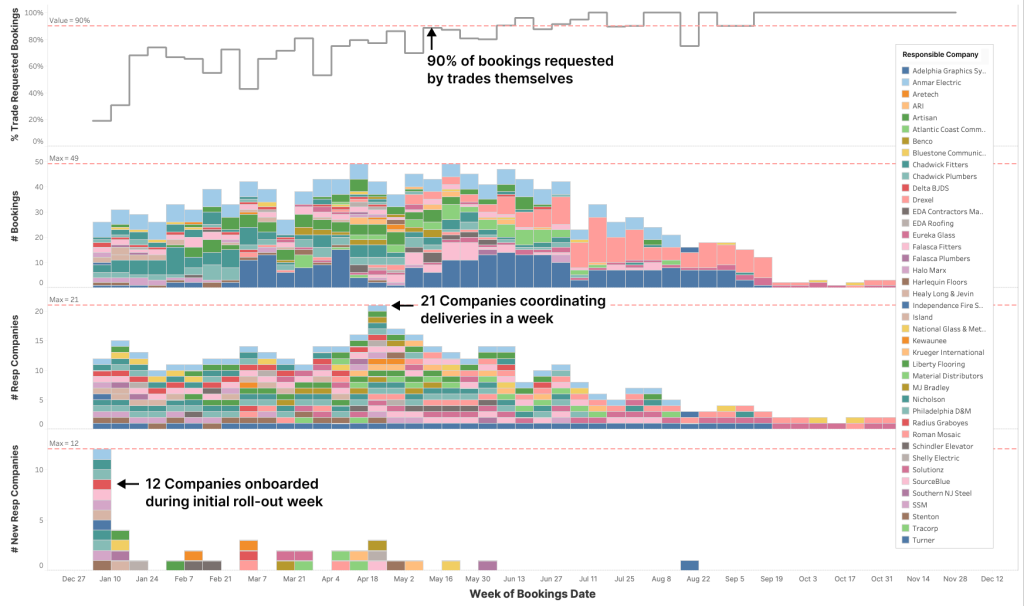
Delivery Routing
Through StruxHub’s location breakdown structure (LBS) and site logistics controls, the Turner team defined the permitted pathways for materials deliveries to go from entry gates, to offloading docks/bays, to 1 of the 14 levels. Trades could choose these resources in the booking request form and see on the sitemap where deliveries were happening on-site.
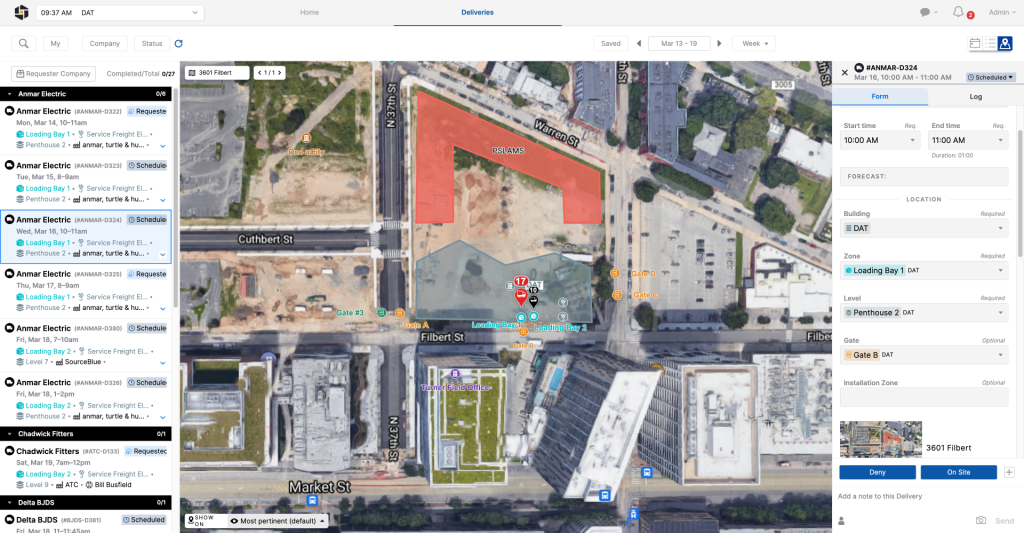
Coordination of Hoists
One of the biggest complaints from trades before the project’s transition to StruxHub was the unavailability of a hoist for a scheduled delivery. This problem was resolved with StruxHub’s ability to reserve a hoist with a delivery booking. The cumulative hours of using the hoist was also tracked at the trade and project level (see graph).
In addition, the ease of updating the shared resources on site allowed the project team to seamlessly transition from using the external hoist and passenger cars to the internal service freight elevator in May (see graph).
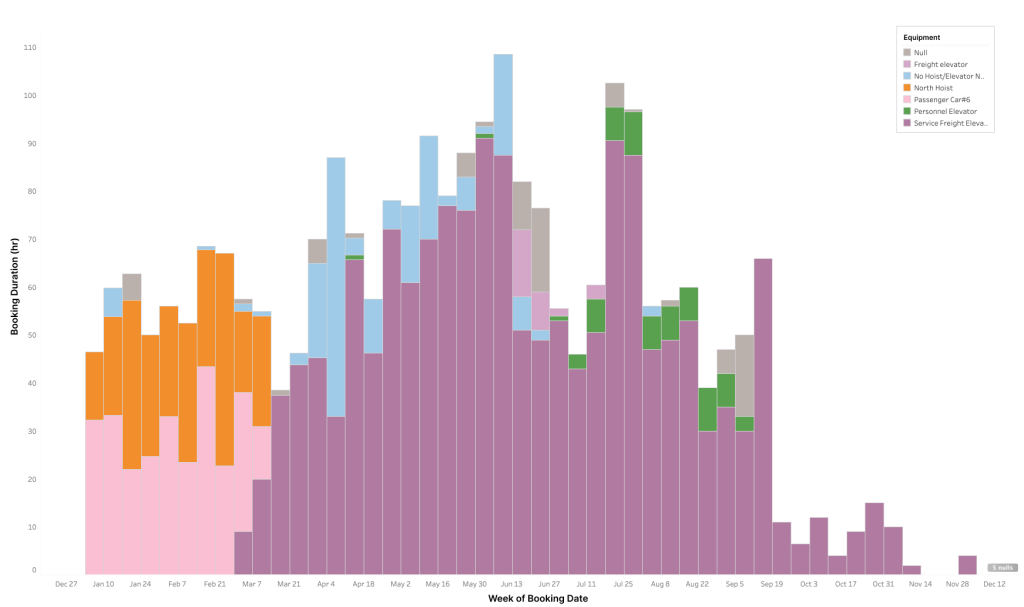
Advanced Planning of Deliveries
Many trades took advantage of the repeat delivery functionality in StruxHub (see inset), which allowed them to block the same delivery time window for weeks and sometimes months in advance. This created a more predictable delivery schedule for the entire site.
To quantify this advanced planning, we track the number of days a booking is requested before the delivery date. For the DAT project, the median value for this metric was 10 days (see graph), which is one of the highest values of all StruxHub projects to date.
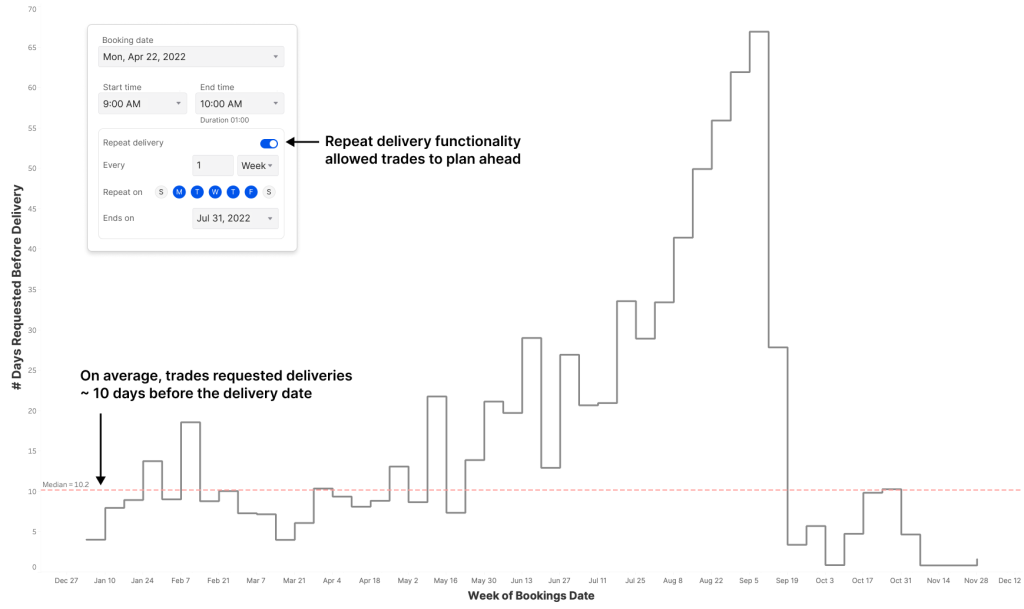
Summary
The Wexford DAT implementation of StruxHub was an overall success. A Turner Superintendent even stated that “StruxHub was the best money spent on the project”.
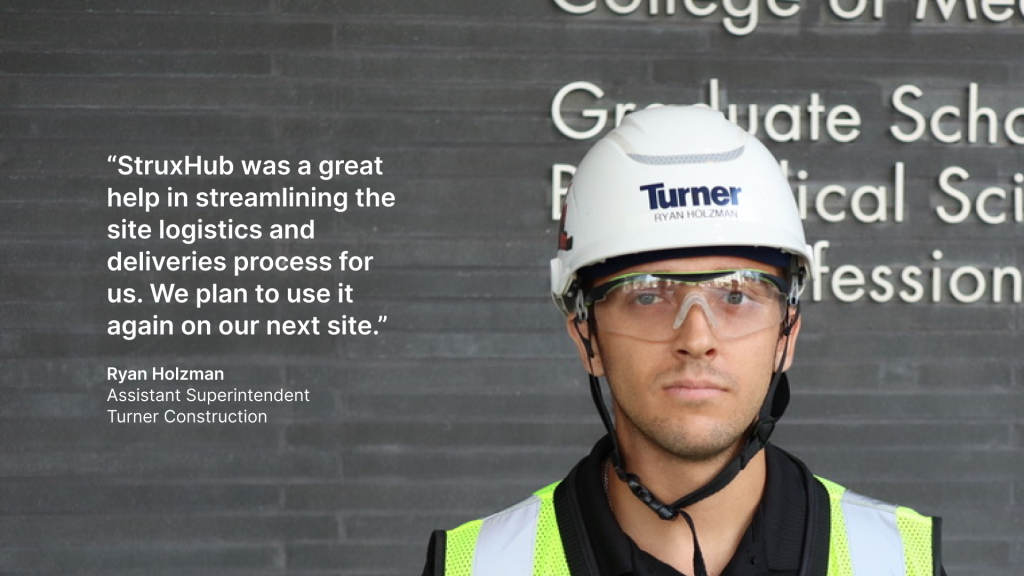
StruxHub helped in the following ways:
- The project team successfully transitioned from a failing calendar app to rolling StruxHub out to their trades in a span of only 2 weeks.
- The project achieved high field adoption (90% bookings by trades) and exceptional advanced delivery planning (on average, booking requests were made 10 days in advance).
- Through StruxHub’s delivery workflows and resource management features, double bookings of the hoist—the main pain point pre-StruxHub—were essentially eliminated.
Overall, the Turner team was able to take back control of their site. The positive experience at Wexford DAT (see below and video testimonial) furthermore convinced the team to continue using StruxHub on the fit-out of the neighboring One uCity Square high-rise.





